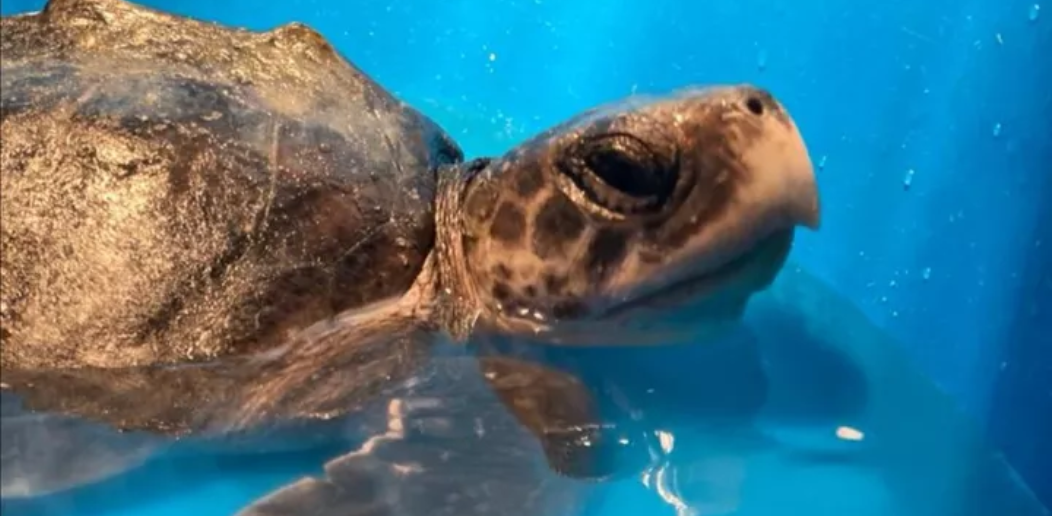Towards the end of November, as a result of Storm Arwen in Wales, a Kemp Ridley turtle who was later named Tally washed ashore on a cold beach. More than 4,000 miles from its home in the Gulf of Mexico, how the turtle arrived in Wales is still a mystery.
This type of turtle is extremely rare and was even close to extinction back in the 1980s with fewer than 200 breeding females in the world. They weigh about 40kg and have a completely round shell measuring over 2ft. The population today is around 9,000 nesting females, which has significantly increased from the 1980s. However, they do still face threats to their population due to the overhunting of their eggs.
Ashley James, who initially spotted Tally on the beach, knew that it was not meant to be in Wales and initially thought it was dead. Because of the peculiar nature of this find, he decided to alert local officials, who then helped him manage the situation.
Ashley realised that Tally was not dead, but in cold shock after having raced to the beach as a result of the disruption caused by Storm Arwen. Unusually, the marine biologist in contact with Ashley at the time had instructed to keep Tally cold, as giving it a lot of heat at once could cause more damage, whereas gradually increasing the temperature of the turtle means it has a better chance of surviving.
Tally was then moved to a unique and purpose-based incubator at Anglesey Sea Zoo, where it is currently ‘showing small signs of recovery’ and is in a ‘stable’ condition.
Treating cold shock is extremely difficult as the water levels are drastically different, with the average in the Gulf of Mexico around 30 degrees, to 8 degrees in Wales this time of year. Tally is being treated by the Zoo and not on show, as they are working on carefully getting it to full health. There are high hopes, with Tally now awake and alert, and there is a good possibility that Tally will make a full recovery and be able to be taken back home 4,000 miles away.
Conservation is an important part of the work of Anglesey Sea Zoo. They run a number of conservation and education programmes, such as the Crawfish Research programme, which is focusing on rebuilding the European spiny lobster (also known as Crawfish) fishery in Wales. The fishery was destroyed because of poor management and non-sustainable fishing practices.
Find out more about their conservation work here.




